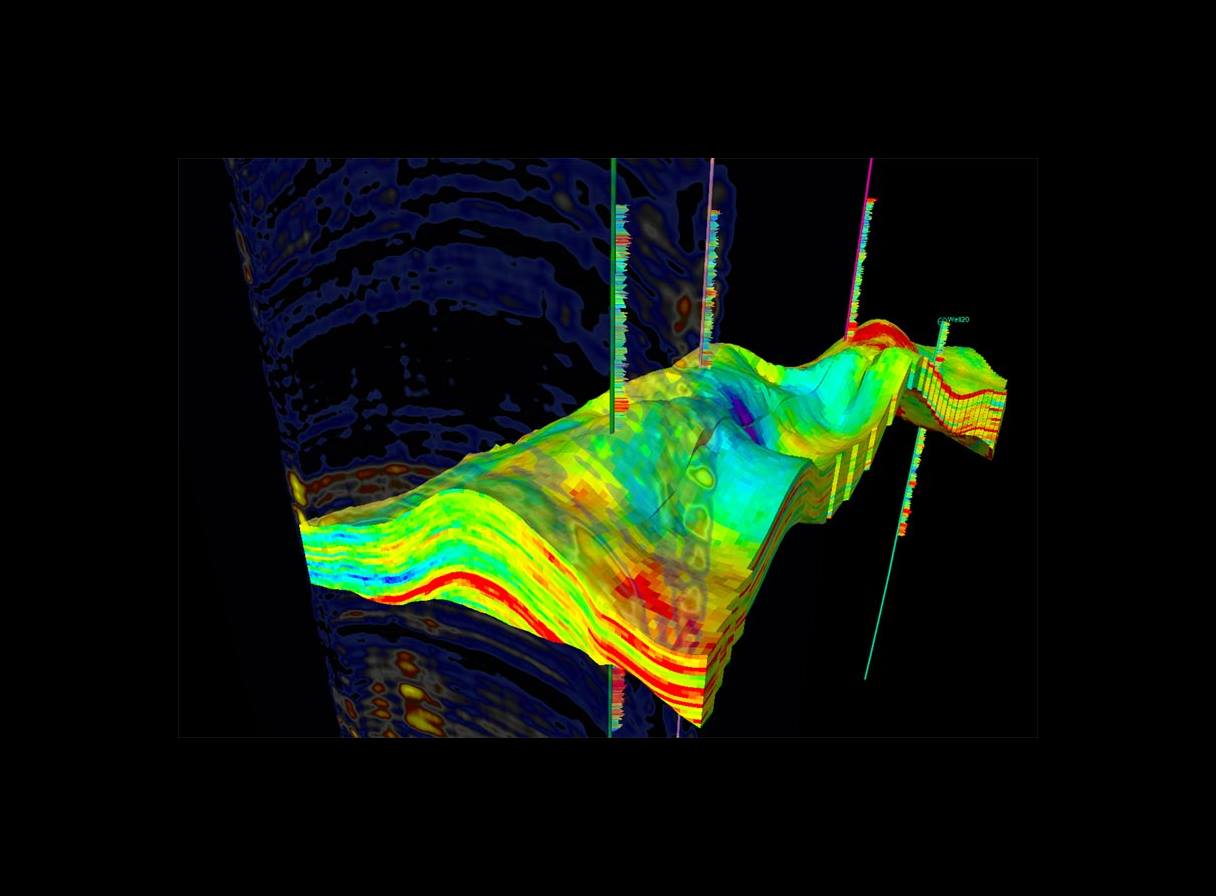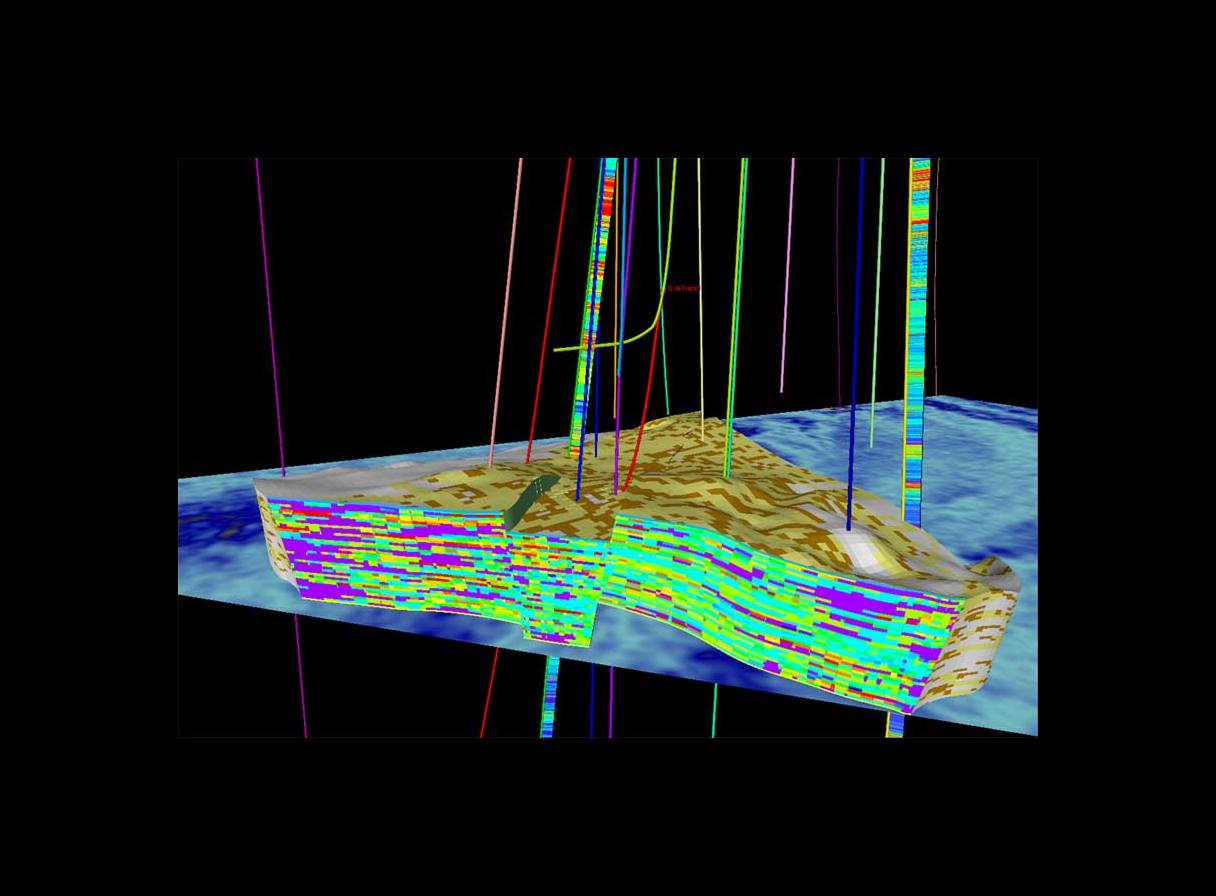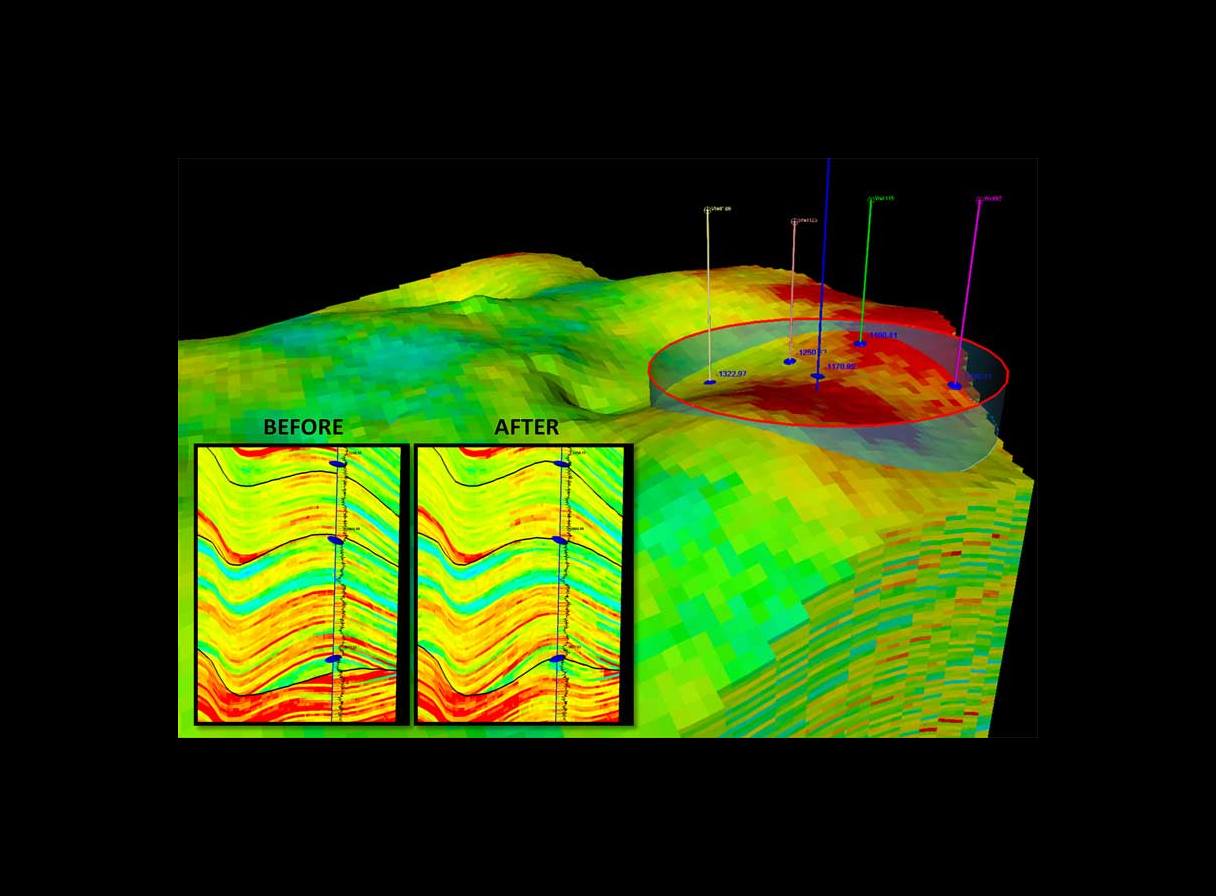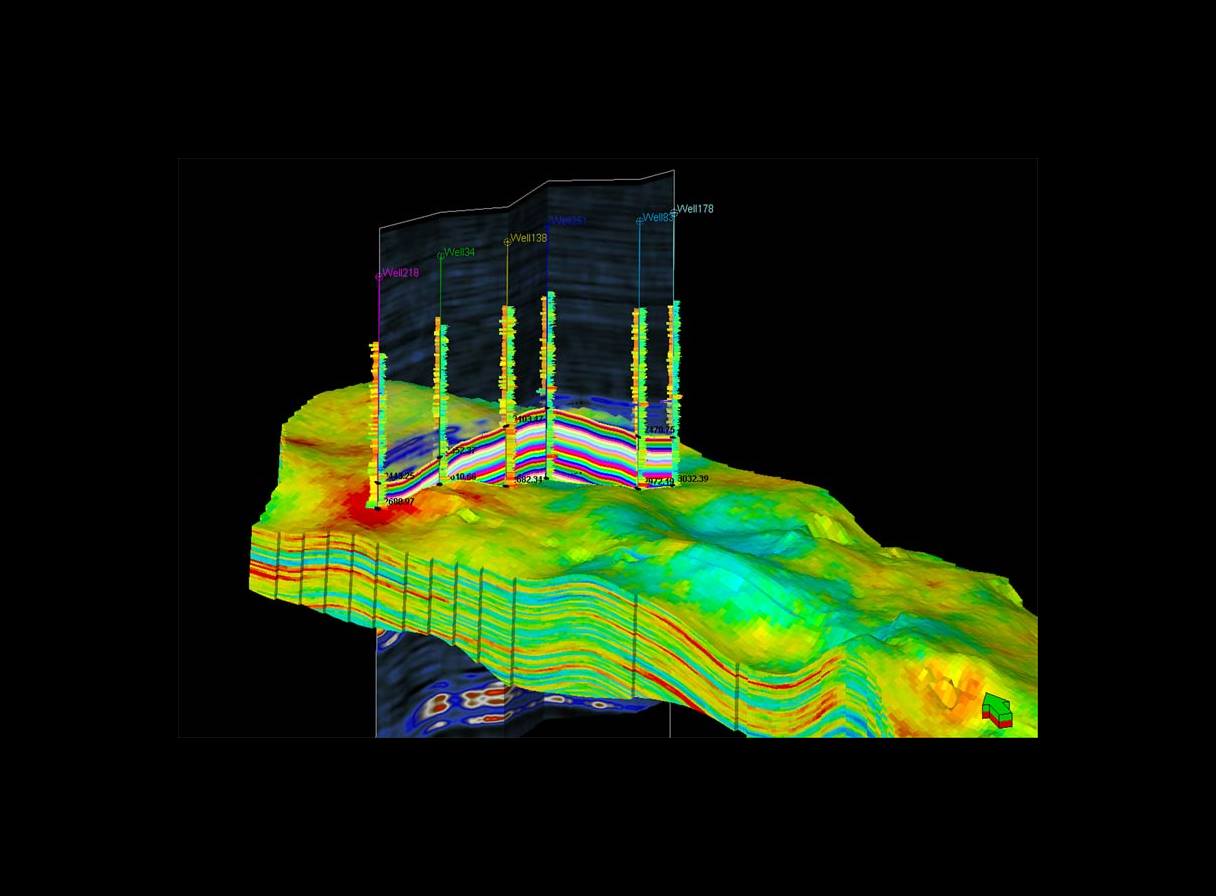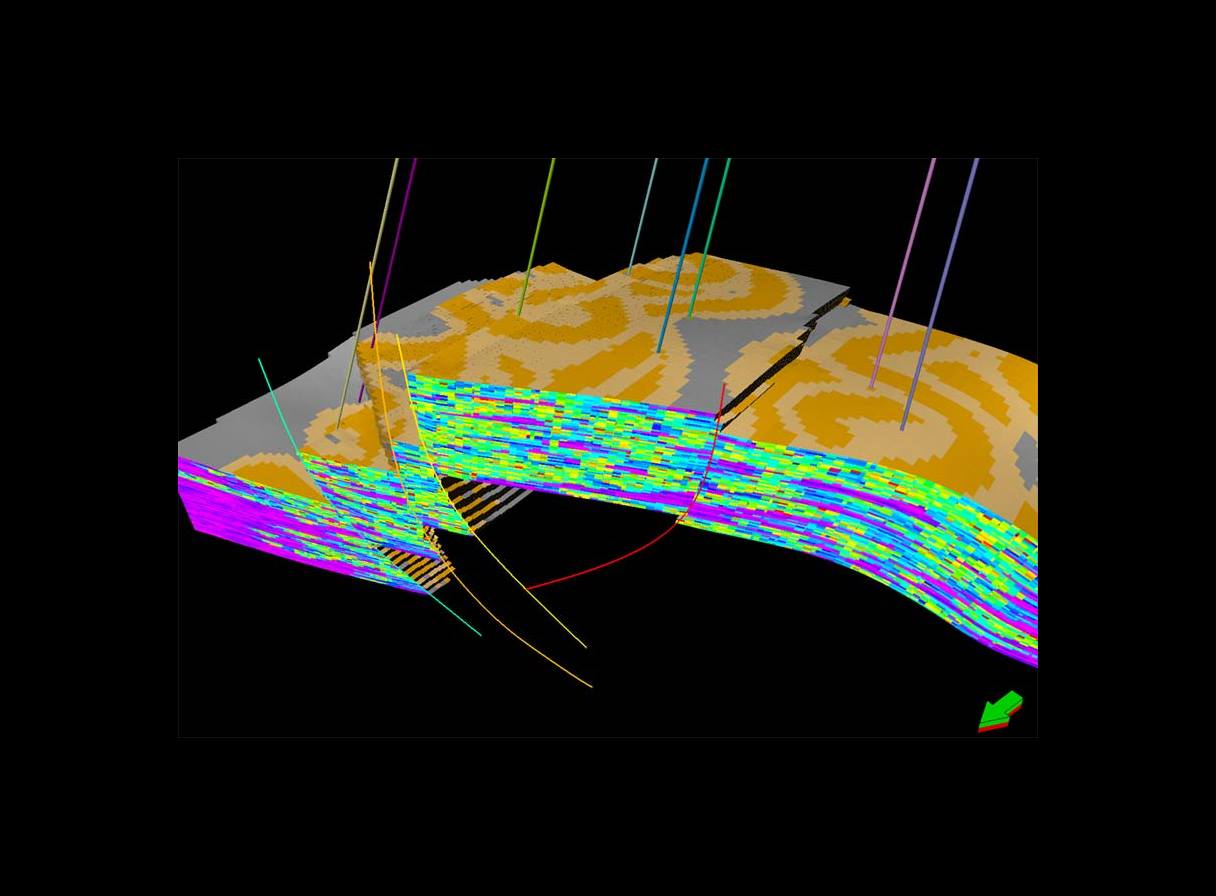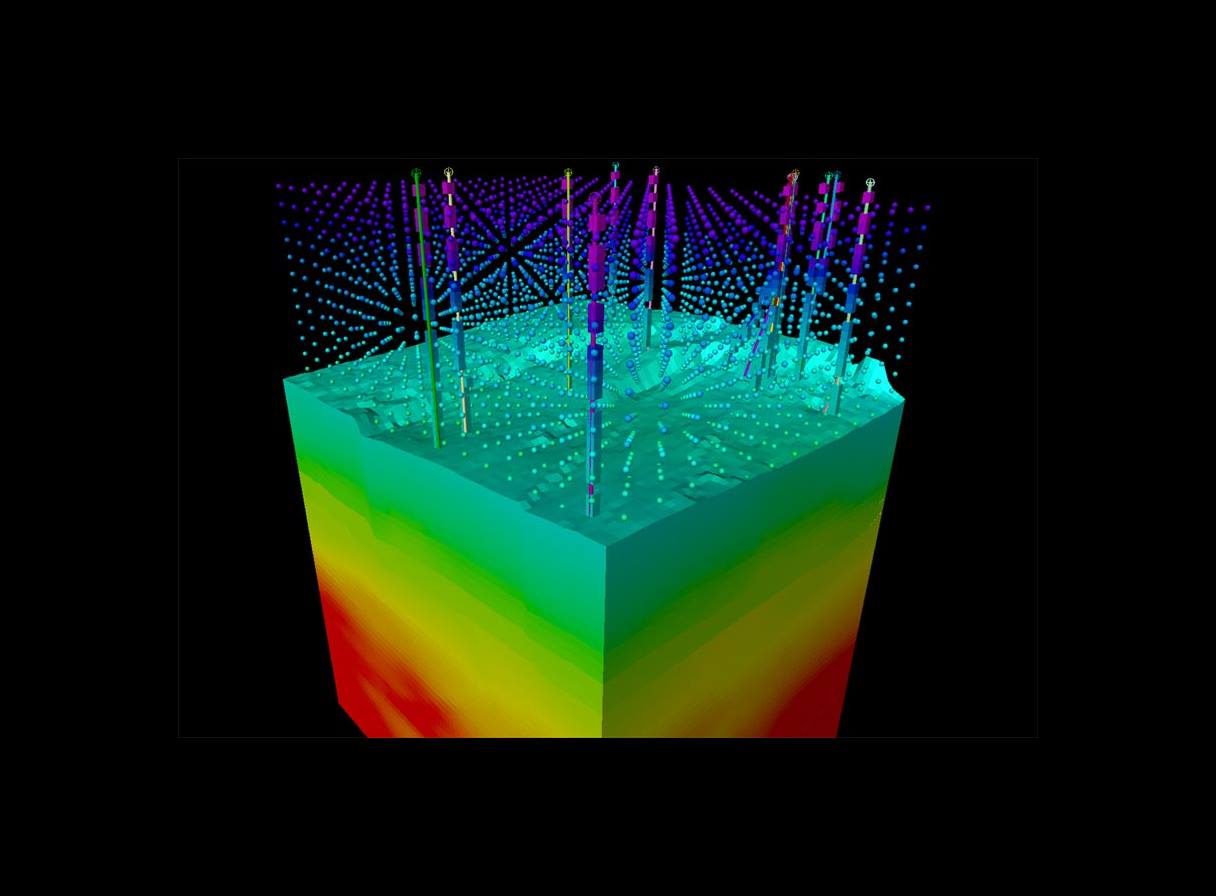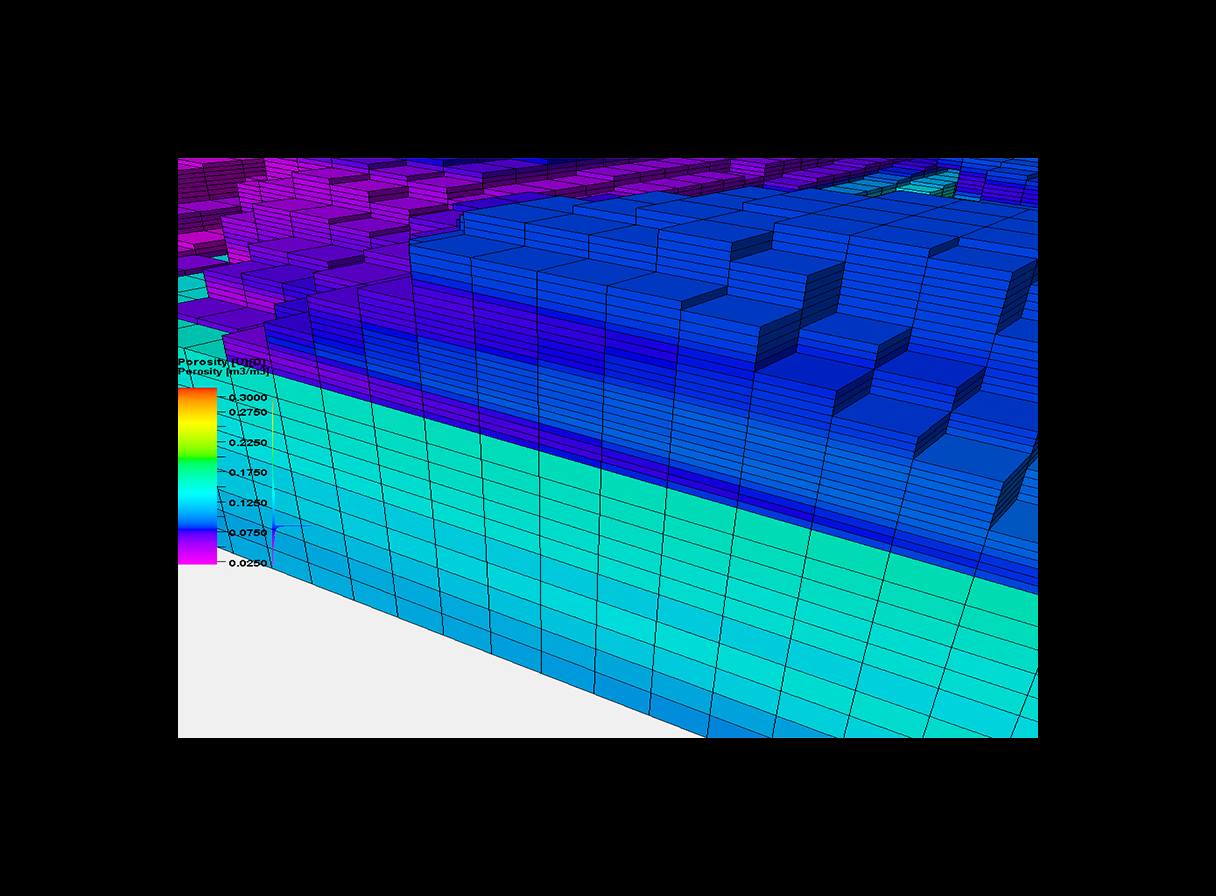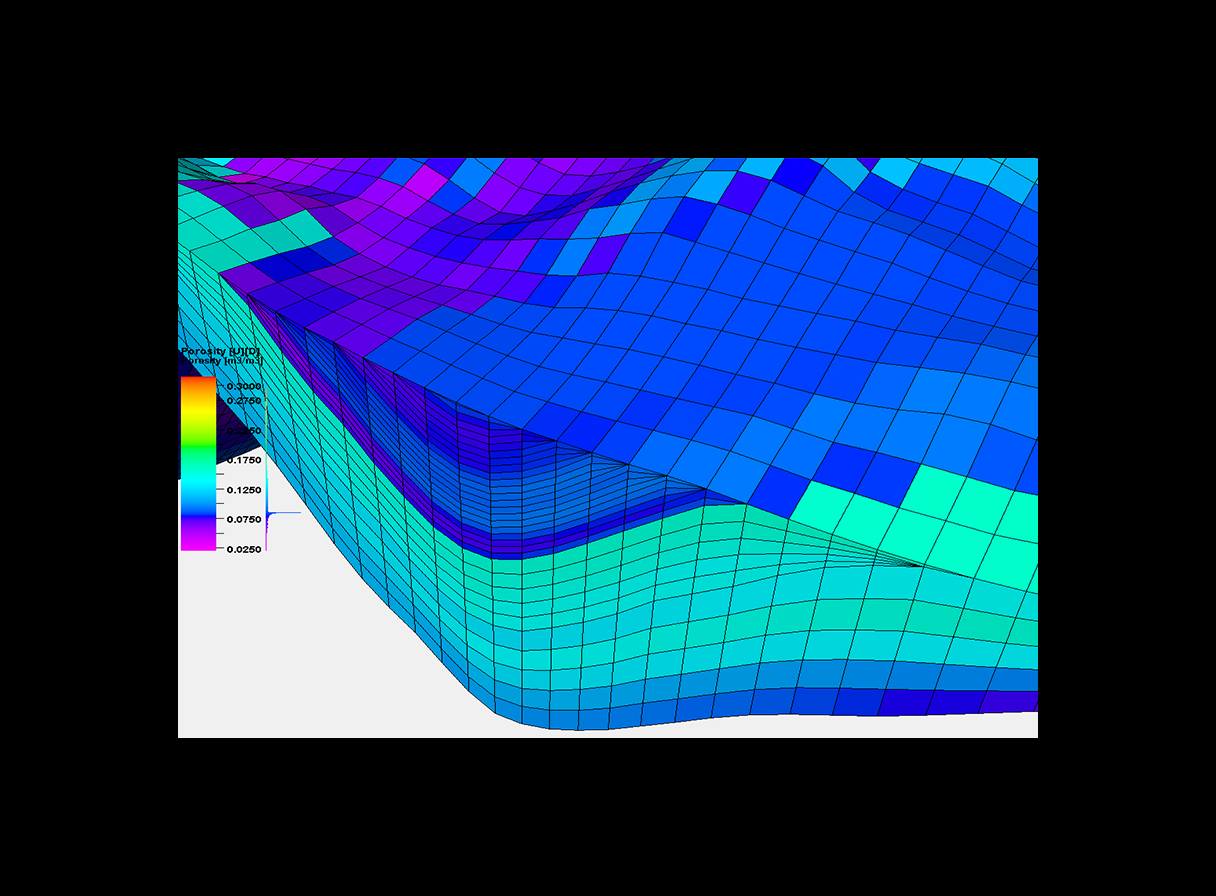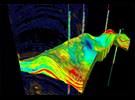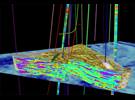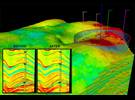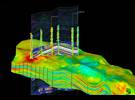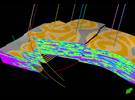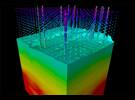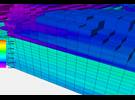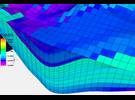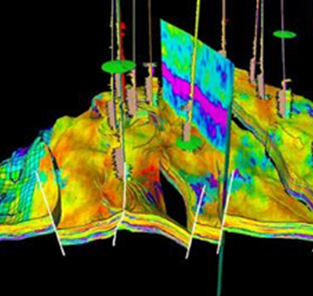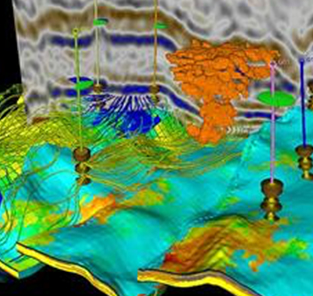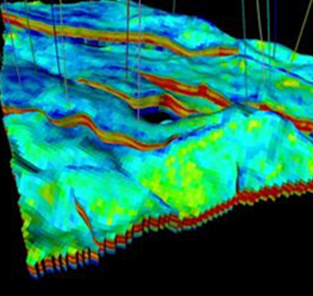Petrel petrophysical modeling enables the population of geocellular 3D grids with continuous data—whether the distribution is to be conditioned to well data, to previously modeled facies properties, or to both. The module provides the tools users need to easily and accurately model reservoir properties such as porosity, permeability, net to gross, and saturations.
The extrapolation and modeling algorithms are complemented by extra functionality, such as property calculators, filtering options, and mathematical functions. The module also enables the scale-up of high-resolution well log data and point attribute data into the geocellular grid. With these modeling dialogs open concurrently, the effect of changes to scale-up parameters, data analysis settings, or property modeling algorithms are visualized instantaneously.
Features
- Petrophysical models can be conditioned to facies models.
- Deterministic modeling algorithms include traditional kriging algorithms and moving average, which is based on inverse distance weighting.
- Stochastic modeling algorithms include sequential Gaussian simulation and Gaussian random function simulation.
- Custom algorithms can be created and run in combination with other available methods.
- Trend and secondary data, such as logs, properties, vertical function, and seismic data, can be used with collocated methods.
- Local property model update is available to regenerate the values of cells only in the area to be updated while keeping consistency and continuity with the surrounding cells in the grid.
- Dynamic QA maps can be generated.
- Modeling input parameters can be saved as objects to reuse, share, and include in workflows.
- The modeling input parameters editor is enabled for petrophysical modeling, which supports editing, viewing, exchanging, and reporting all petrophysical modeling parameters inside a flexible, unified, tabular interface.
